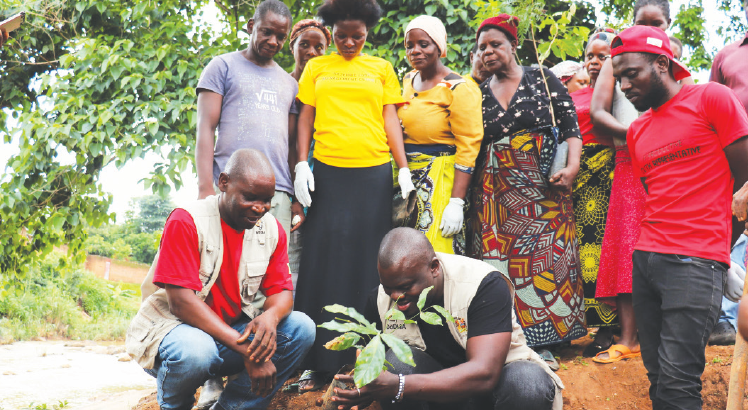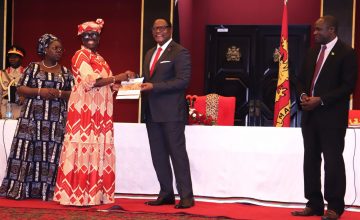Zomba learns from Freddy
It is nearly a year since Cyclone Freddy disrupted the livelihoods of more than 2.2 million people in southern Malawi, claiming 679 lives and leaving 537 still missing.
As the devastating cyclone whirled across the Southern Region in March 2023, fear gripped the people in villages along Likangala River in Zomba. As the rainstorm dumped in six days enough rain that the country receives throughout its rainy season, the river burst its banks and washed away anything standing in its way.
Likangala Ward disaster risk management committee (DRMC) chairperson Gasten Mwepesa says it was miraculous that the area recorded no deaths during what the Department of Disaster Management Affairs (Dodma) terms one of the worst catastrophes in the country’s history.
However, several people sustained injuries and lost property as the flash flood ripped homes to rubble.
“We’ve had flash floods before, but the 2023 episode was the worst in years,” he recalls. “Cyclone Freddy destroyed houses and property, affecting over 1,300 families, who fled to an evacuation centre for shelter and humanitarian support.”

Flooding left people in Likangala Ward convinced to drape the riverbank with vegetation, which helps slow running water and allows rainwater to sink into the ground instead of breaking the banks.
So, when the committee, led by ward councillor Munira Abdullah Bakali ,took advantage of the 2023/24 tree-planting season to plant the trees along the river.
The committee mobilised community members with the support of faith leaders to avert a repeat of the tragedy.
“We saw it with our eyes: We’d never seen Likangala River that hostile,” says Catherine M’manga of Chiluphya Village. “So we’ll do anything to pacify the angry river and ensure that floods no longer threaten our lives.”
The community has planted thousands of indigenous and exotic trees on Likangala riverbank.
The green belt stretches from Mpondabwino Trading Centre near the populous Chikanda slum going downstream.
The event was graced by government officials from Dodma, Zomba City Council, the Department of Forestry and Wildlife and the Environmental Society of Malawi (Wesm).
People of all ages participated in making the riverside stretch greener and safer for all.
Mwepesa attributes the positive response to strong partnerships and ward leadership.
“Our councillor always encourages us to work with everyone, including the youth. We are happy that our community always rises to such occasions,” he says.
The reforestation drive in Likangala Ward is just one of the interventions by disaster risk management committees in Zomba City to reduce the frequency of floods as well as loss and damage.
Chinamwali Ward committee is also working tirelessly, sensitising people who have built homes on steep slopes of Chinamwali Mountain and waterways to relocate to safe zones.
Councillor Bakali, who is also the deputy mayor of Zomba City, says disasters affect lives, livelihoods and public health in the city.
“This impacts the economic, physical, cultural and environmental well-being of individuals in the process,” she warns.
The councillor hails the committee for the job well done and pledges continued efforts to protect Zomba citizens from further risks of disaster.
She states: “Communities in Zomba City and the DRMCs are trying hard to disseminate the message to the residents with actions on the ground,” she states.
“These efforts are remarkable since preparing for disasters saves countless lives, speeds up people’s recovery and saves money.”
Dodma urges other local governments to emulate the risk reduction efforts underway in Zomba.
Most disasters in Malawi are aggravated by the country’s massive loss of green cover in prone areas, says Dodma spokesperson Chipiliro Khamula.
“In the case of Freddy, the mudslides and floods caused inexplicable devastation due to the fact that there was no vegetative cover to reduce their impact,” he says.
To Khamula, the planting of trees in degraded landscapes such as the settlements along Likangala River offers a ray of hope for better and safer communities.
“We are looking forward to having the efforts replicated across the country under various Village DRMCs,” he says.
Malawi has committed to restoring 4.5 million hectares of deforested and degraded landscapes by 2030 by investing in environment-friendly agricultural technologies, community forests, soil and water conservation, riverbank restoration and forest management





